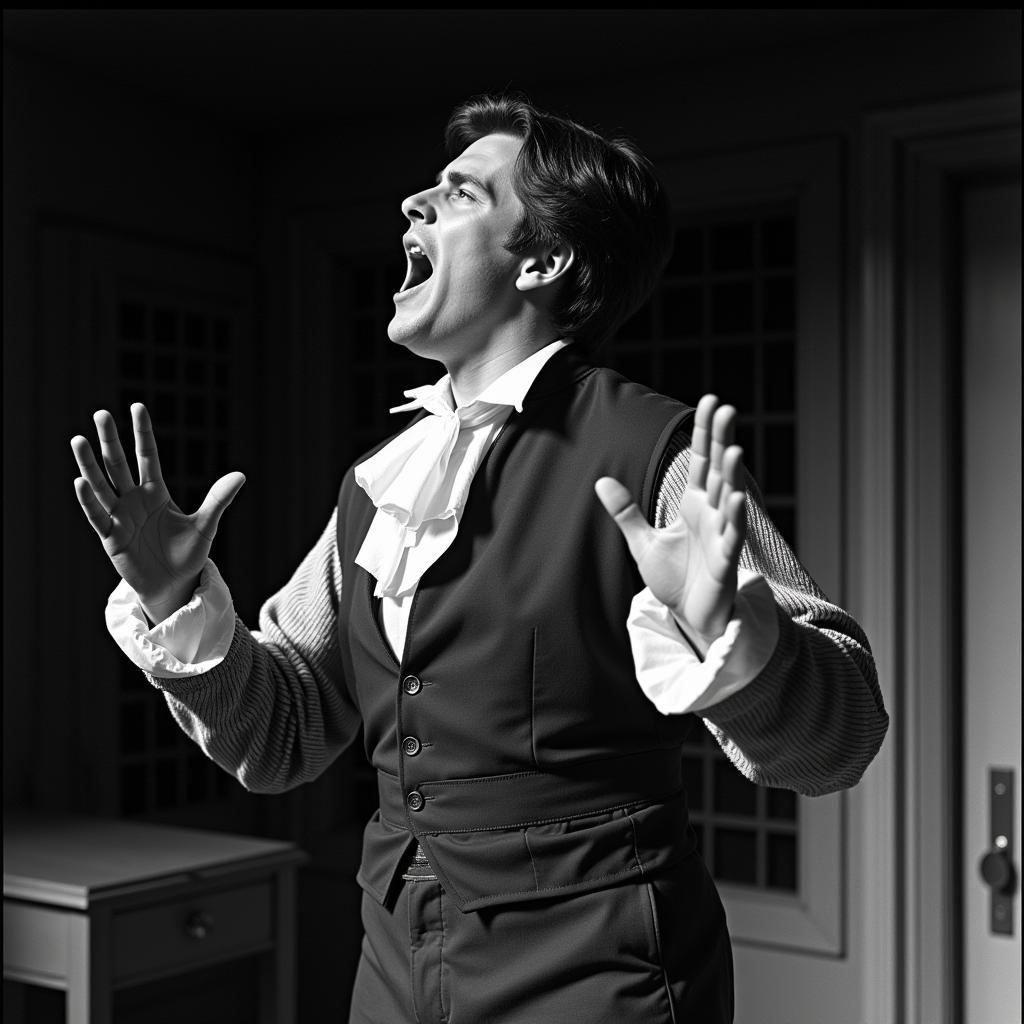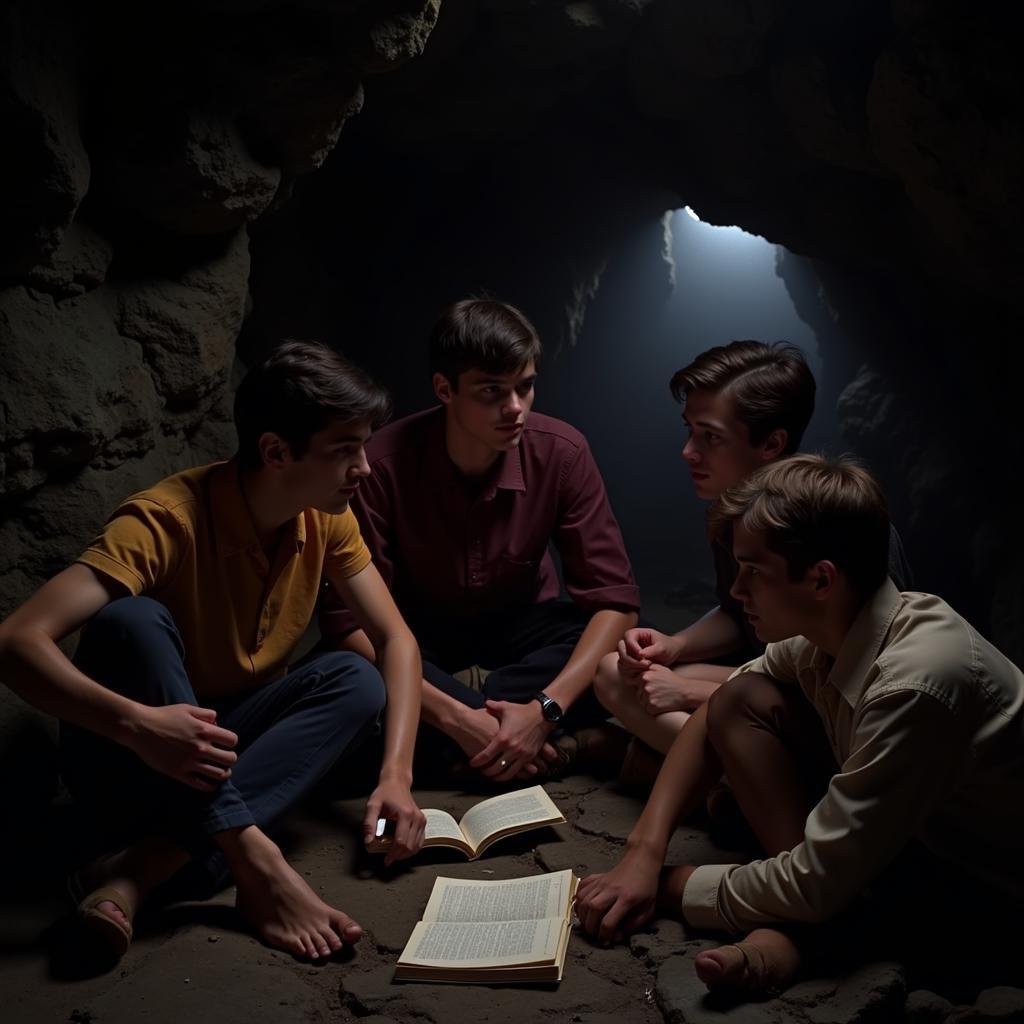The film Dead Poets Society, a coming-of-age story about a group of prep school boys inspired by their charismatic English teacher, is set in 1959. This specific time period is crucial to understanding the context of the story and the characters’ motivations. But beyond just knowing the year, understanding the societal norms and expectations of that era adds a layer of depth to the film’s themes of conformity, tradition, and rebellion. Let’s delve deeper into the significance of 1959 and its impact on the film.
1959: A Year of Tradition and Change in Dead Poets Society
The setting of Dead Poets Society in 1959 at the fictional Welton Academy, an all-boys preparatory school, deliberately places the narrative at a pivotal point in American history. The 1950s were marked by post-war prosperity, traditional values, and a growing sense of conformity. Welton, with its emphasis on “tradition, honor, discipline, excellence,” embodies these societal norms. Choosing 1959, specifically, allows the film to explore the tension between these established values and the burgeoning counter-culture movements that would define the following decade.
The boys at Welton, including the central character Neil Perry, are under immense pressure to conform to their parents’ expectations and societal pressures to pursue traditional careers like medicine, law, or engineering. This stifling atmosphere is juxtaposed with the arrival of John Keating, their new English teacher, who encourages them to “seize the day” and embrace their passions. Keating’s philosophy, inspired by the Romantic poets, challenges the rigid structure of Welton and the prevailing societal norms of 1959.
 Dead Poets Society Classroom Scene in 1959
Dead Poets Society Classroom Scene in 1959
Why is the Setting of Dead Poets Society So Important?
The year 1959 is not merely a backdrop; it’s integral to the film’s narrative. The societal context of the time heightens the conflict between the characters and their environment. The strict adherence to tradition and the pressure to conform create an environment ripe for rebellion. This tension fuels the boys’ fascination with Keating’s unconventional teaching methods and their rediscovery of the Dead Poets Society, a secret club dedicated to the power of poetry and self-expression. Imagine a similar story set in the 1990s or today. The impact would be significantly different. The constraints of 1959 amplify the risks the boys take and the tragic consequences that follow.
Exploring Themes of Conformity and Rebellion
Dead Poets Society masterfully uses its 1959 setting to explore the timeless themes of conformity and rebellion. The film subtly contrasts the restrictive environment of Welton with the burgeoning spirit of individuality and self-discovery represented by Keating and the Dead Poets Society. The film doesn’t outright condemn tradition, but it highlights the dangers of blindly following it without critical thinking and self-reflection. This nuanced approach makes the film resonate with audiences even today, as the struggle between conformity and individuality remains relevant across generations.
 Neil Perry Performing Shakespeare in 1959
Neil Perry Performing Shakespeare in 1959
How Does 1959 Influence the Characters?
The societal expectations of 1959 significantly impact the characters’ decisions and destinies. Neil Perry’s passion for acting clashes with his father’s insistence on a medical career. This conflict, amplified by the societal pressures of the time, leads to a tragic outcome. Similarly, other boys in the group grapple with the expectations placed upon them, leading them to explore their own forms of rebellion, both big and small. The film portrays the struggle between personal desires and societal pressures in a way that is both specific to 1959 and universally relatable.
when is dead poets society set
What if Dead Poets Society Was Set in a Different Time?
Imagine Dead Poets Society set in the 2020s. While the core themes of conformity and rebellion would remain, the context and expressions of these themes would change dramatically. The pressures faced by students today are different from those of 1959. Social media, technology, and a rapidly changing world present new challenges and opportunities for self-expression and rebellion. The setting of 1959 provides a specific lens through which to examine these timeless themes, adding a layer of historical and cultural significance to the story.
 Dead Poets Society Boys Meeting Secretly in 1959
Dead Poets Society Boys Meeting Secretly in 1959
Conclusion
The year 1959 isn’t simply a detail in Dead Poets Society; it’s a crucial element that shapes the narrative, characters, and themes. By understanding the societal context of the time, we can gain a deeper appreciation for the film’s enduring message about the importance of individuality, passion, and the courage to “carpe diem” – seize the day. The film’s exploration of conformity and rebellion against the backdrop of 1959 continues to resonate with audiences, reminding us of the timeless struggle to find our own voices and pursue our dreams.
FAQ
- Why is 1959 important to the story? The year 1959 establishes the societal context of tradition and conformity, which heightens the impact of Keating’s message of rebellion and self-expression.
- How does the setting influence the characters? The societal pressures of 1959 greatly influence the characters’ decisions and ultimately contribute to the tragic events of the film.
- What are the main themes explored in the film? Conformity, rebellion, tradition, individuality, and the pursuit of passion are key themes explored within the context of 1959.
Need further support? Contact us 24/7: Phone: 02043854663, Email: [email protected] or visit us at Zone 34, Bac Giang, 260000, Vietnam.